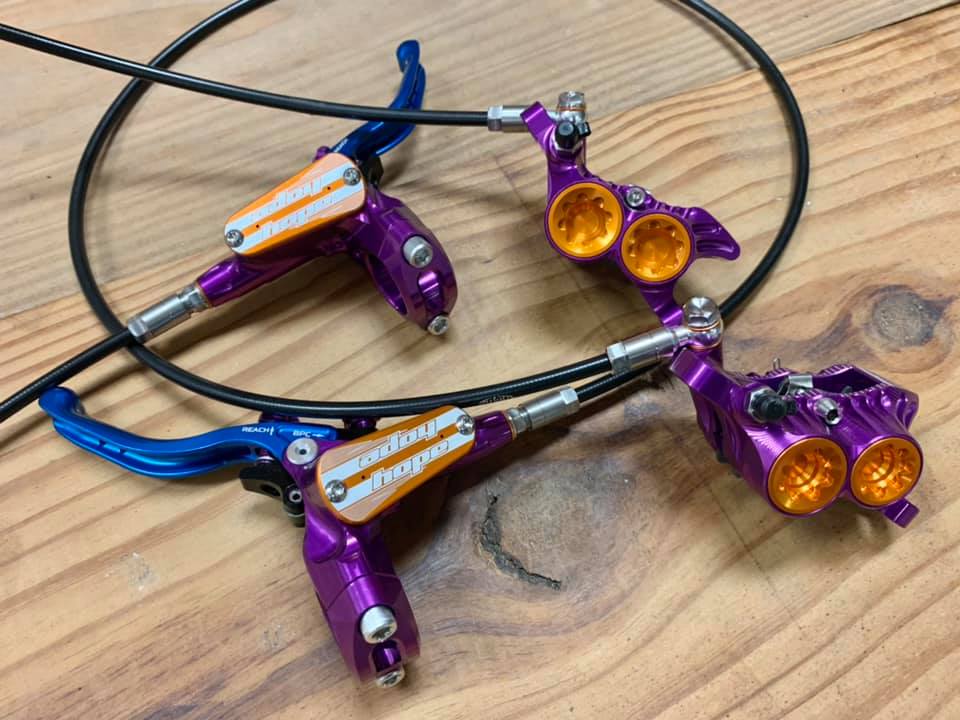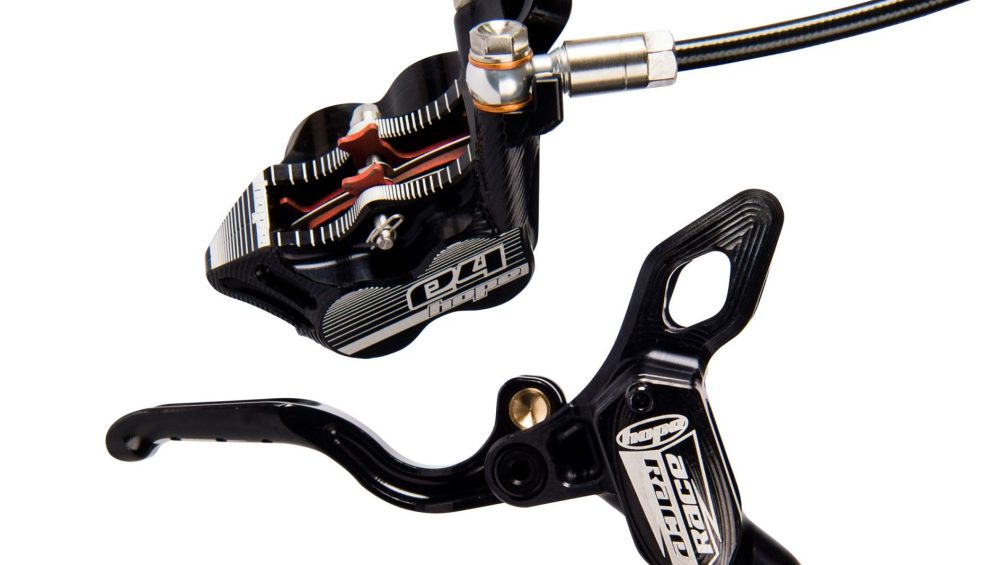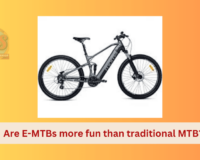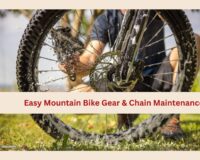British company Hope has long been a familiar disc brake brand in the mountain bike world. Its range is extensive, but we’ve chosen the stripped-down Race Evo E4 to test here, as it appeals to both cross-country, trail, and enduro riders looking for a lightweight yet powerful brake.
As Hope has long favoured aftermarket brakes, but with brands like SRAM and Shimano putting out excellent brakes and brands like TRP, Hayes, and Magura stepping up their game, it’s probably not the no-questions-asked. Hope brakes are still manufactured in Barnoldswick in the United Kingdom, and the after-sales service is unparalleled in the industry.
The structure & design
The development of Race Evo brakes is based on weight savings and braking performance. A cross-country rider hoping to improve their braking performance or a trail and enduro rider looking to lose a few grams will benefit from these brake pads.
Hope’s bread and butter is CNC machining. The brake levers and callipers are made of aluminium and are exquisitely crafted. Design and finish are of the highest quality; Hope has perfected this for many years.
These levers incorporate a split clamp for ease of installation and are compatible with MatchMaker, so they can neatly integrate shifter pods. Recall that the levers are ergonomically shaped, and the blades have holes drilled into them for those of us who experienced weight saving in the 1990s.

There is no longer a tool-free adjustment for bite point and reach on the lever‘s front for obvious weight-saving reasons. A small Allen tool allows only the lever reach to be adjusted, which is a bit of a compromise, reducing weight. Titanium bolts also help trim weight.
On the other end of the hydraulic hoses, four pistons of 4x16mm phenolic are integrated into compact brake callipers. Adapters for each fork and frame size are available from Hope so that the system fits any rotor or fork design.
There are no significant differences between the calliper used on the Tech 3 R4 enduro brake and the one used on this calliper. The pads can be removed from the top of the bike so that you can visually check their wear as you wash and service your bike.
As for the rotors, you had the option of choosing, but staying with the brand, we received a set of floating discs. Rotor options from Hope include floating discs and vented discs. We have front and rear rotors that measure 200mm in diameter. These brakes are compatible with most bikes.
Steel rotors are riveted to an aluminium carrier and have a steel braking surface. Aluminium carriers are more heat-resistant. With the internal fins on the vented rotor, heat buildup is reduced by 15%. Vented rotors are only available in 203mm.
Installation
We had expected the rear brake hose to be easy to run, but it was more difficult. Thus, more parts were removed than we had planned. Therefore, we had to bleed the brakes. We found that to be a straightforward process, well explained in one of the company’s videos. With the brakes installed and the bed-in process complete, we set out to test them on all the local trails, from long cross-country tours to downhill sessions, over several months.

As someone trying to trim the weight a little on my Stumpjumper EVO, we decided to go with the Hope Race Evo E4 disc brakes over a burlier option. For a component such as brakes, especially one as significant as brakes, we wanted to see if the brakes provided adequate power and low weight to meet the riders needs.
Achieving performance
The last impression hasn’t changed. It’s been a while since the first impression, and the last impression hasn’t changed. They consistently perform well and do not have any issues. A smooth and progressive lever feel combines with plenty of power at the bite point, plenty of reach adjustment to dial them in to suit, and a lever shape that feels good in the hand.
Brake feel is a very personal thing. We may all prefer the way a brake feels. As soon as your finger touches the lever, the Hope doesn’t have that stick-in-the-spokes power. Instead, the brakes gradually and smoothly build up muscle, with a decent amount of lever travel. The brakes can be modulated to fit every situation. The bite point is clear, but maybe a little softer and at a later point in the lever’s travel compared to some brakes where the bite point can come suddenly when you touch the lever.
Braking becomes much more predictable and consistent with the bite point later in the travel. The Hopes score highly if you want silky-smooth modulation and control. The Hopes might be a little better for those who prefer the bite point to come much earlier in the lever travel.
Conclusion
Is it worth buying these brakes? Most likely, yes. While cheaper options are available, Hope brakes are made in the UK, the brakes are endlessly serviceable (We know many people who have 10-year-old Hope brakes because they can get spares for them), and the company’s customer service is top-notch. There’s no need to buy these if you already have brakes on your bike, but if you want a brake with superb modulation and an attractive design, then check them out.






